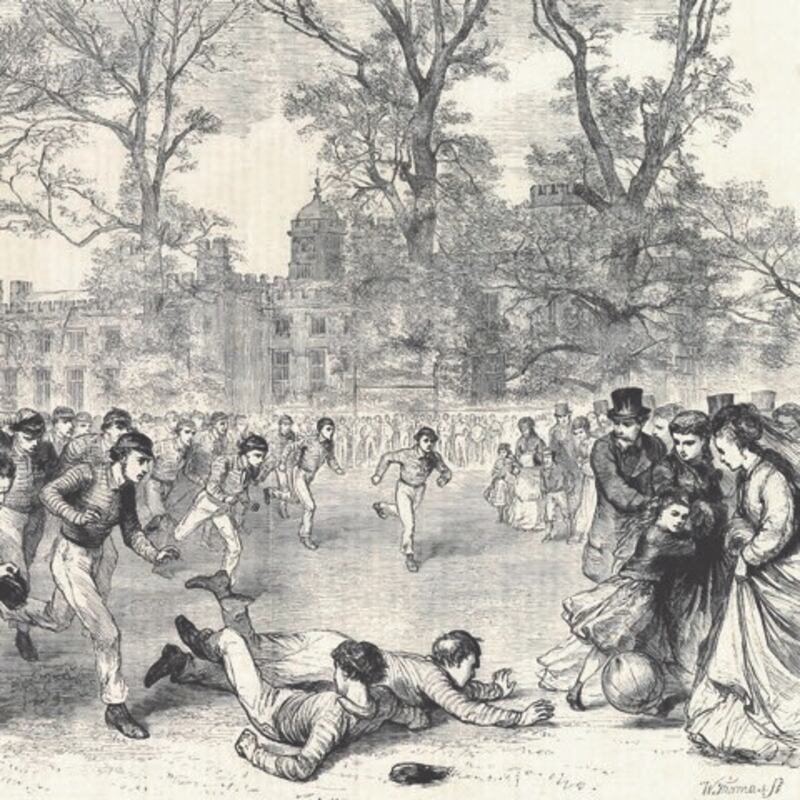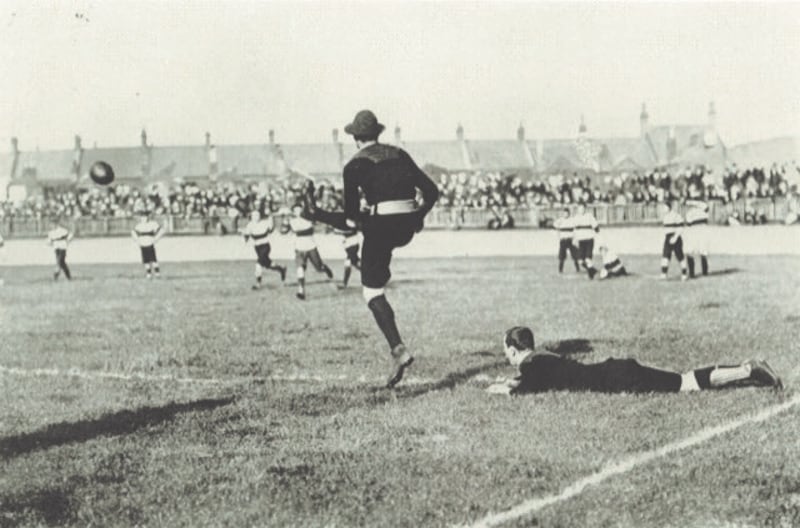Almost 50,000 fans filled the Aviva Stadium in Dublin just two short weeks ago, to watch Leinster play Munster in a United Rugby Championship clash on November 25th, 2023.
This weekend in the Champions Cup, provincial Irish rugby fans are on the march again. Munster followers will likely fill Thomond Park as they welcome Bayonne, while throngs of Leinster fans are bound for La Rochelle to face the current European champions. The game will be played in front of an expected capacity crowd at the Stade Marcel-Deflandre and a huge TV audience – a far cry from the first year of the competition in 1995 when barely 4,000 people were coming through Leinster gates.
The professional era has played a huge role in the commercialisation and promotion of Irish rugby. But that is only one element of the story. That rugby has travelled from an exclusive sport to a more inclusive game with huge popularity reflects a particular historical journey. Not a revolution, but a fascinating evolution.
The story of rugby in Leinster especially, is the story of class, gender, politics and identity – from small beginnings in the mid-1800s to the hugely successful commercial and sporting entity it is today. It’s the story of private schools, elite universities and doctors, bankers and solicitors leaving Dublin to start clubs all over the province as the game went from minority interest to mass appeal.
READ MORE

No one captures this arc quite like Brendan Behan did. In his fictionalised memoir Borstal Boy, Behan wrote about his perception of the sport as “a game for the Protestant and shop-keeping Catholic, and I never thought it had anything to do with me. Rugby was a game I always connected with the English or the upper-classes . . . We used to see the boys from Belvedere Jesuit School, and from Mountjoy Protestant School, going down [to Jones’s Road to play] on Wednesdays. We persecuted them without distinction of religion . . . We only knew they were rich kids . . . They were toffs, college boys and toffs’ sons. I certainly never thought of rugby football as having anything to do with Ireland or with Dublin.”

For some that perception of rugby has not changed. For a great many others there has been an awakening to the game, similar to that which Behan underwent in Borstal Boy. In summary, while in prison the character “Brendan” is introduced to rugby, one of the few experiences of enjoyment, which helps reshape his perceptions. He found the prison guards, against whom prisoners’ games were organised, suddenly more noble (at least on the rugby field). What’s more, the sheer exhilaration of the sport resonated. Finding former Irish rugby international Robert Collis’ description of lining out for Ireland, Behan wrote: “Reading Collis’ book was like meeting someone from home, and I could see rugby football not as a winter meeting of cricketers, but as a battle fought in the churning mud and myself in the forward line charging for Ireland.”
Considering its origins, rugby has come a long way in terms of both playing and spectator interest. Rugby’s past has primarily been a story about men. Throughout history it has been described as “a promoter of manliness . . . Moral men would earn their manhood on the playing fields . . .”, as rugby historian Tony Collins explained. In contrast, given the growth and success of women’s rugby, we can see that sport is not stationary. Indeed, the continued success and advocacy for women’s rugby has been a commendable endeavour that should not be allowed to slip backwards, as recent controversies have threatened.

Rugby was brought to Ireland from England by students from elite families who attended Dublin University. The code’s first administrators utilised cultural, political, socioeconomic and religious differences to mediate who could and who could not play. A Sabbatarianism rule, for example, outlawed Sunday games, with two explicit intentions. One was to highlight rugby’s Protestant-Christian idiosyncrasies. The other was to ensure working-class men who laboured midweek and on Saturdays, would not be able to leave work to play. Rugby’s split in England into union and league was a direct result of these tensions.

Yet, despite such rules, rugby in Ireland encouraged a more nuanced playing public. As pre-eminent sports historian Paul Rouse revealed, those “who played sport did not necessarily belong to the tribe they were said to belong to by virtue of their sporting choice”. As more rural Irish clubs began to appear, they were much more reliant on social, cultural and religious intermixing. While sporting preferences are not an accurate marker of religious, national or political identities, rugby has remained associated as a sport of the upper classes.
Rugby in Leinster and perhaps universally, was built via the private school system. And many players within today’s Irish provincial squads came through these very same, historically-informed structures. In 1999, Irish Times correspondent Gerry Thornley warned about this over-reliance, in connection to Leinster rugby specifically. Year on year, he wrote, “the same four schools . . . have won the Leinster Schools’ Senior Cup . . . Even some within the IRFU will privately admit that the elitist schools’ game contributed to the union abrogating their responsibilities when it came to spreading the gospel . . . When the Leinster Schools’ Senior Cup starts producing players from non-traditional bases, then truly they can claim to be doing something for Irish rugby. For the moment, it remains . . . a closed shop and a sacred cow for all that.”

But rugby is ever-changing. In September 2007, the Emerald Warriors became the first openly LGBTQ+ rugby club to join the Leinster Metropolitan League. In the 1990s, people such as Mary O’Beirne were pivotal in altering hearts and minds and growing the women’s game. The rise of youth rugby was driven on by enthusiasts in “non-traditional” clubs such as Balbriggan, Skerries, Navan, Delvin, Dundalk and Carlow, which brought in a new generation of boys and girls who might not have played otherwise. That brought in the likes of Shane Horgan and Trevor Brennan – players who broadened Leinster Rugby’s appeal early on. Now the Leinster brand is one the most successful in Ireland – winning the European Cup four times in seven years, with an ever-growing fan base.
In the current Leinster squad, players such as Tadhg Furlong from Wexford and Ciarán Frawley from Skerries show how things have changed in the province. But the question remains, will they persist as two of the few successful professionals with non-traditional rugby roots; or are they a sign that the evolution continues?
David Doolin is the author of A History of Rugby in Leinster, published by Merrion Press
- Sign up for push alerts and have the best news, analysis and comment delivered directly to your phone
- Find The Irish Times on WhatsApp and stay up to date
- Our In The News podcast is now published daily - Find the latest episode here













